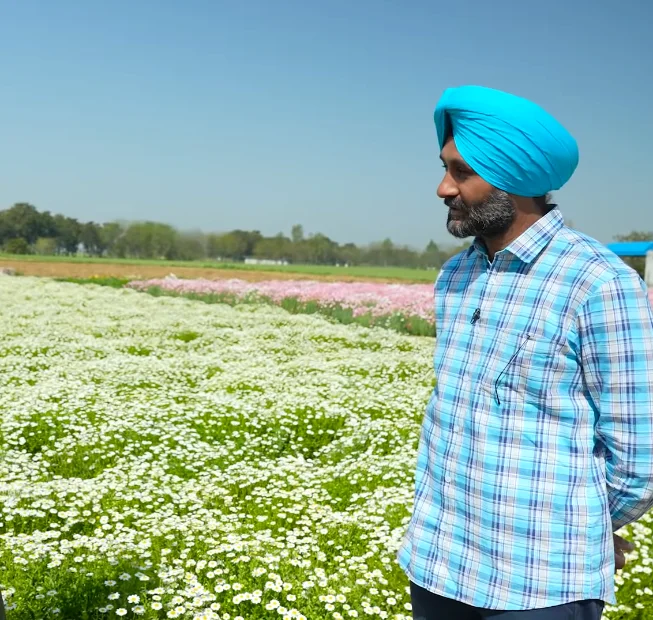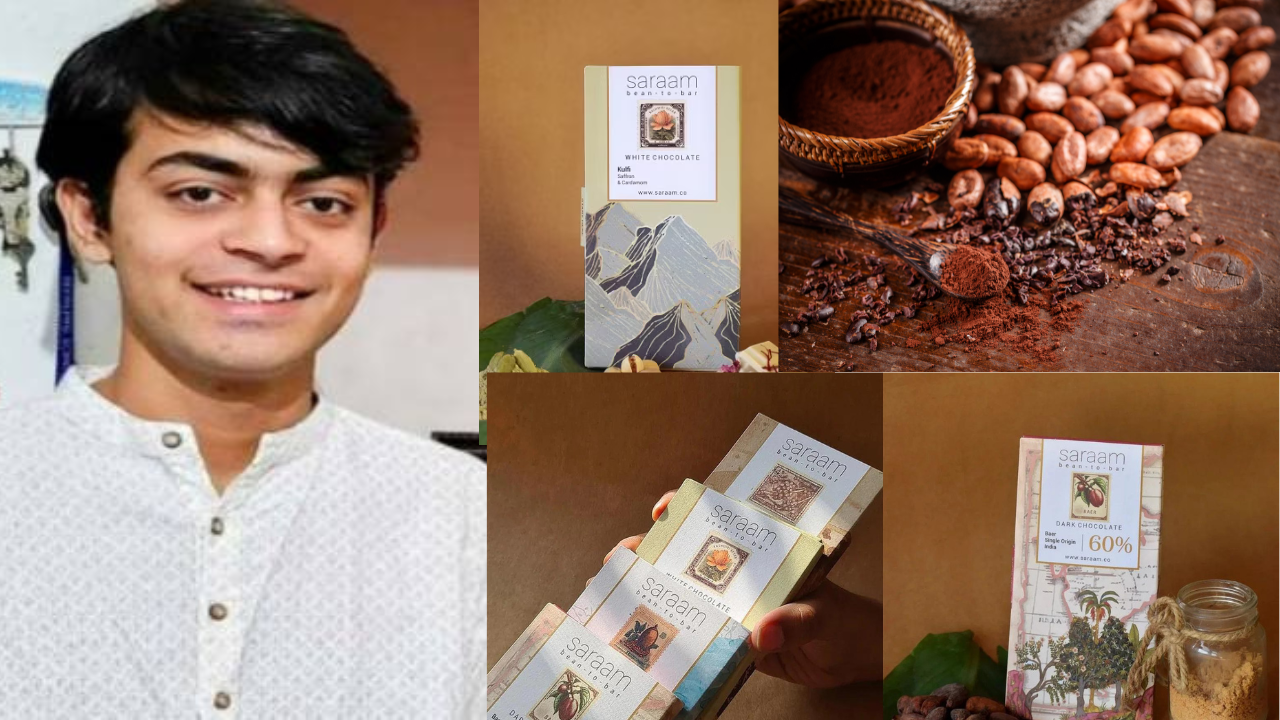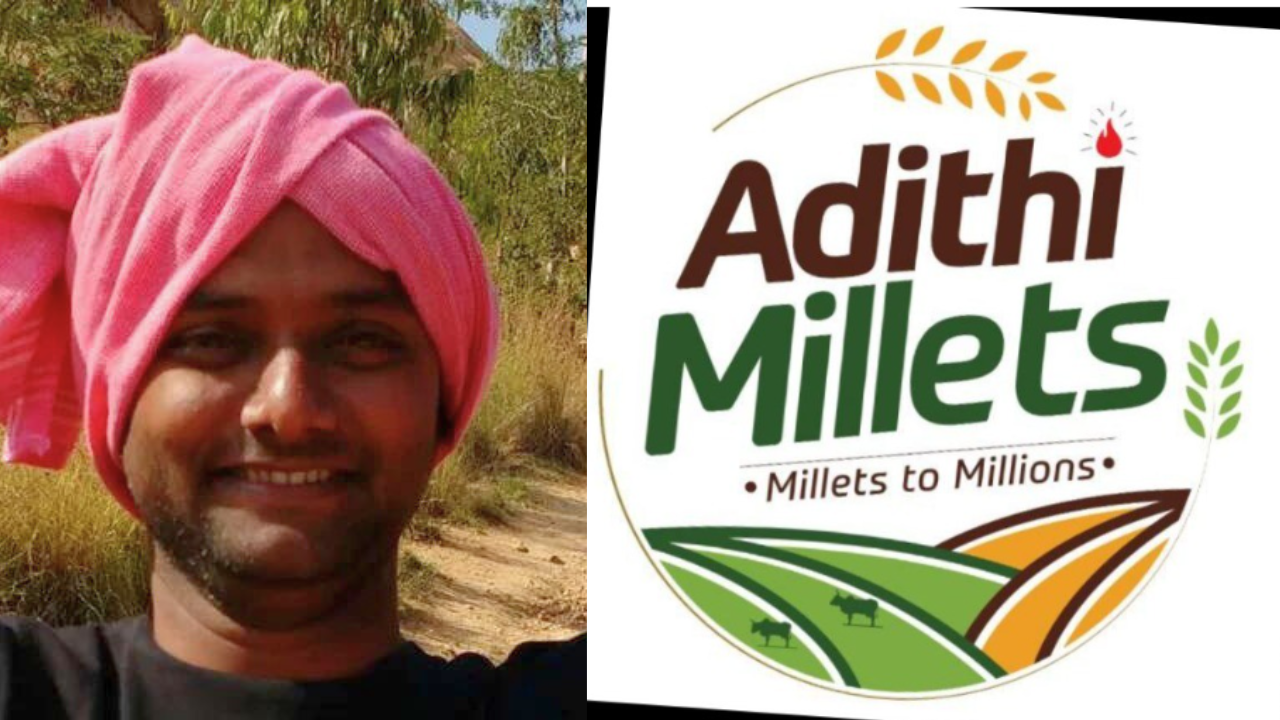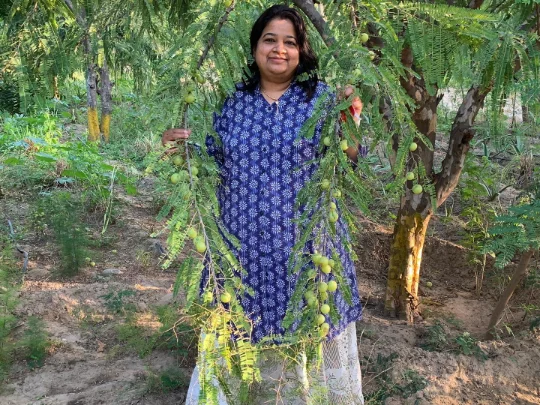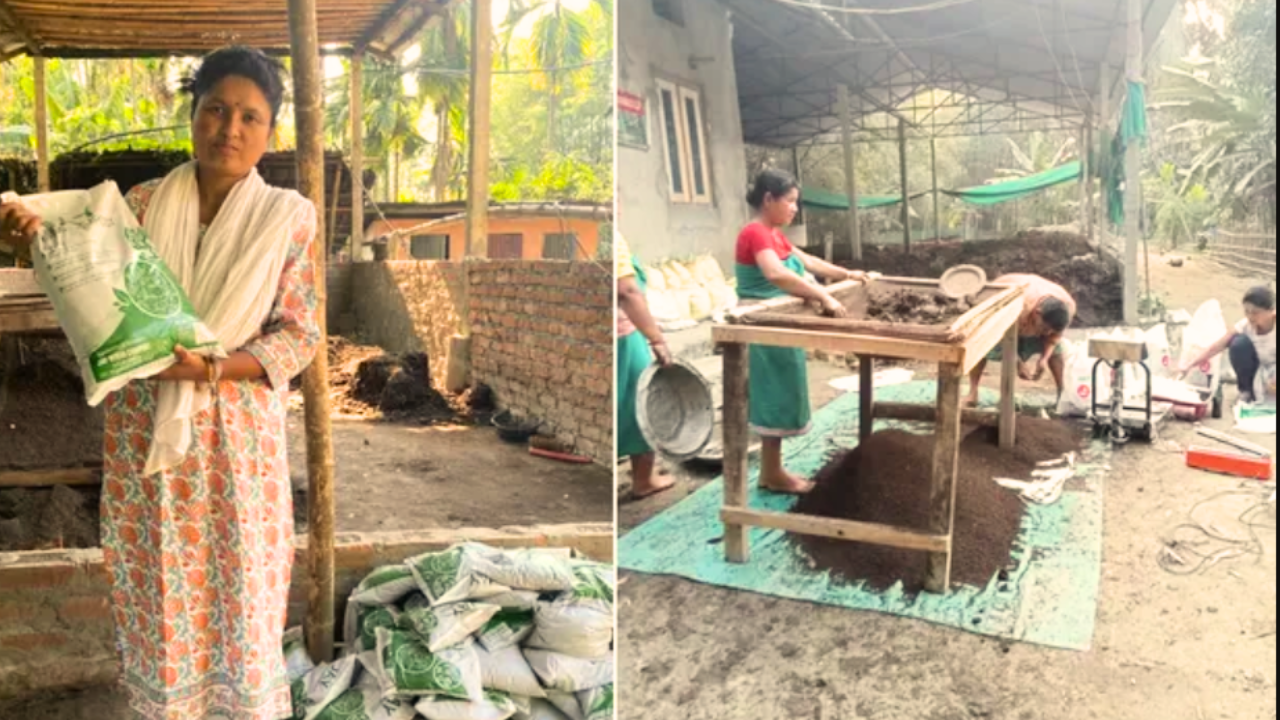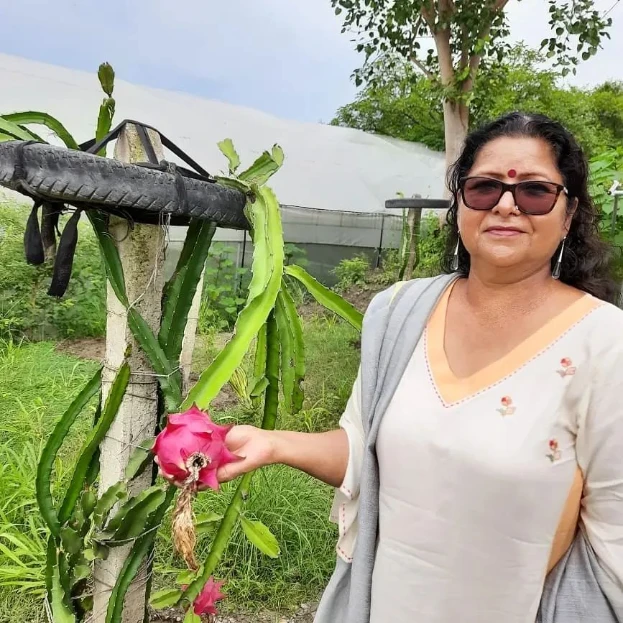After trying and not succeeding in various businesses, like selling candies and customizing flashy jeeps, Gurwinder Singh Sohi found himself with limited options to make a living. He stopped his education after finishing 12th grade due to not passing the Punjab JET (Joint Entrance Test), which is required for admission to the state’s technical institutes. Even though many of his relatives had moved to Canada, Gurwinder was determined to remain in India.
He came to the realization that his best choice was to work alongside his father in farming on their family’s land in Nanowal village in Fatehgarh Sahib district, Punjab. This decision was made in 2008, a time when he had faced numerous failures in business and even his father had lost hope in his ventures. Gurwinder humorously recalls, “I had failed in so many businesses that my father had given up on me.”
Opting for farming, Gurwinder knew he didn’t want to follow in his father’s footsteps of growing only paddy and wheat. He explains, “Growing only one type of crop depletes the soil’s essential nutrients, and the profits are very small.”
The earnings from cultivating wheat in Punjab, Uttar Pradesh, and Haryana are merely around Rs20,000 per acre after considering expenses for urea, pesticides, zinc, watering, and harvesting (assuming electricity is free). Gurwinder was determined to find a way to earn more from his efforts.
The blooming of a thought
In 2008, Gurwinder discovered something interesting. The Punjab Horticulture Department was helping out by providing seeds for Holland gladiolus flowers. “I thought about giving flower farming a shot. My dad, knowing my history, didn’t want to get too involved. He said I could experiment on a small piece of land, about 0.25 acres,” he explains.

Gladiolus flowers grow from things called corms, which are like underground parts similar to onions. People often mistake them for bulbs. Gurwinder got his hands on these corms and planted Gladiolus flowers in October 2008.
During Punjab’s winter, the weather is kind of like Europe’s summer, making it great for growing flowers. Recently, places like Karnataka, Tamil Nadu, Andhra Pradesh, West Bengal, Maharashtra, Rajasthan, Delhi, and Haryana have also become big centers for growing flowers.
When it comes to the global flower trade, India ranks 18th, but it only contributes 0.6 percent. This means there’s a lot of potential for flower farming to grow in the country.
For Indian farmers, there are different ways to do flower farming. You can grow flowers with long stems that are cut (like gladiolus), or you can grow stemless flowers (like marigolds). You can also produce seeds from flowering plants or even set up places where people can buy decorative plants.
Gladiolus flowers start blooming around 90 days after planting and the flowers last for about a month. Gurwinder shares, “After that month, we take out the corm, gather the seeds, clean and sort them, and then store them in a cold place for next year.”
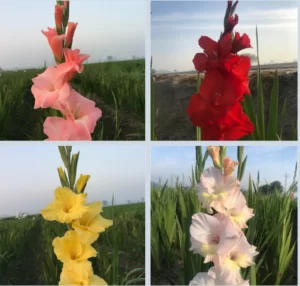
Gurwinder sold his first batch of flowers in the local markets and made around Rs3 for each gladiolus spike. This success encouraged him and his dad allowed him to use more land for flower farming. He also got some buttercup seeds (called ranunculus) from Israel and planted those too.
These days, Gurwinder runs a farm called RTS Flowers where he grows gladiolus, ranunculus, and marigold on a space of 3 acres. He sells these flowers in markets located in Ludhiana, Chandigarh, and Delhi.
The typical price range for gladiolus in the market is around Rs 4 to Rs 5 per stem, and from one acre of land, about 60,000 flower stems can be produced. Gurwinder highlights that gladiolus farming can bring in earnings ranging from Rs 2.4 lakh to Rs 3.2 lakh per acre.
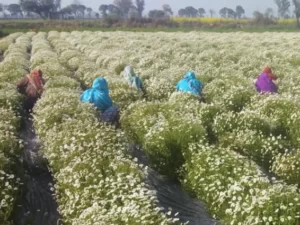
Once the gladiolus flowers are harvested, usually in April, Gurwinder switches to cultivating paddy on the same land, which brings in about Rs 50,000 per acre. This way, his farm generates an annual income of around Rs 3 lakh per acre. Even after accounting for expenses related to labor and resources, he manages to make a profit averaging between Rs 1.5 lakh to Rs 2 lakh per acre.
The industry of growing flower seeds
However, when the Covid pandemic hit, Gurwinder faced setbacks because the markets shut down and nobody was buying flowers. Strangely, this tough situation ended up having a silver lining. “During Covid, we didn’t cut the flowers or remove the corms, so our production went to waste,” he explains.
At the same time, people all across India started showing more interest in planting flowers in their own spaces like balconies and gardens. This made the demand for flower seeds go up. Plus, the business of plant nurseries has been growing rapidly in recent years as people become more aware of the importance of having greener surroundings and taking care of the environment.
“Seeing the growing interest in flower plants, I decided to start producing ‘annual’ seeds,” Gurwinder mentions.
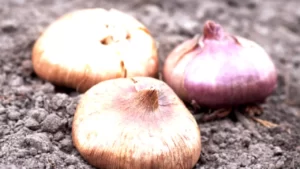
Annuals are plants that complete their lifecycle in just one year. They grow from seeds, bloom during the summer, produce seeds, and then they’re done. It’s like a one-year flower journey to ensure future generations.
Dealing with annuals turned out to be a smart move for those looking to get into the flower seed business. Gurwinder got into cultivating 25 different types of annuals like roses, marigolds, calendulas, alyssums, chrysanthemums, asters, daisies, delphiniums, lupins, salvias, and more. He started collecting seeds and supplying them to buyers.
These flower seeds get sold to traders, exporters, and more than 100 nurseries all across India.
When Gurwinder decided to start seed production, he got some seeds from the local market and even got some from Europe, where the flower business is quite big. He even traveled to countries like the Netherlands and Israel to learn about the best ways to grow flowers.
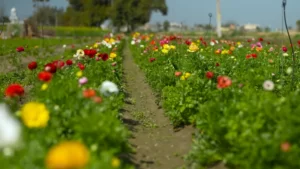
Now, Gurwinder farms flowers for selling and producing seeds on a total of 25 acres of land. His dad owns 9 acres, and the rest is on lease. Out of these, 3 acres are used to grow flowers that are sold directly, while the other 22 acres are dedicated to growing flowers for seed production.
Growth via working together.
On top of this, he has also provided training to 20 farmers in the village about growing flowers and buys the seeds back from them, which they cultivate on about 20 acres of land. “Compared to wheat farming, they earn three times as much. These farmers only need to plant the seeds and then harvest. I handle the other tasks like sorting, grading, storing, and packaging,” he explains.
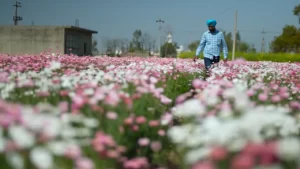
In total, he sells flowers and seeds that come from a combined area of 45 acres.
“To get ready for seed production, I take orders in advance for the upcoming season. This helps me estimate the demand. Based on that, I plan my production – I plant flowers according to the seed demand. Once the seeds are ready, they’re cleaned, sorted, and packed before being sent to buyers,” he describes.
“Each gladiolus corm or seed sells for Rs 2.50 per piece. From one acre of land, you can get 200kg of calendula seeds, which sell for Rs 1500 per kg. This adds up to an income of Rs 3 lakh per acre,” he highlights.
For alyssum flowers, the seeds are sold at Rs 2000 per kg, and one acre produces around 70kg of seeds (earning about 1.40 lakh). With nasturtium, an acre yields 400 kg of seeds that sell for Rs 450 per kg, bringing in an income of Rs 1.80 lakh.
“This is much more profitable than growing wheat or paddy, even though labor costs are higher. I spend around 30,000 per acre on labor since machines aren’t commonly used in floriculture. Flowers need delicate care throughout their growth and harvest, which requires manual work,” he notes.
“Still, it’s a profitable form of farming, with returns at least three to four times higher than those from wheat farming,” Gurwinder emphasizes.
Currently, he’s focused on expanding the farming area by involving more farmers to cultivate flowers for seed production. “Even though it demands more effort, floriculture is an excellent farming option because the profits are good, and since production is based on demand, the risks are much lower,” he adds.
You can visit RTS flowers here

